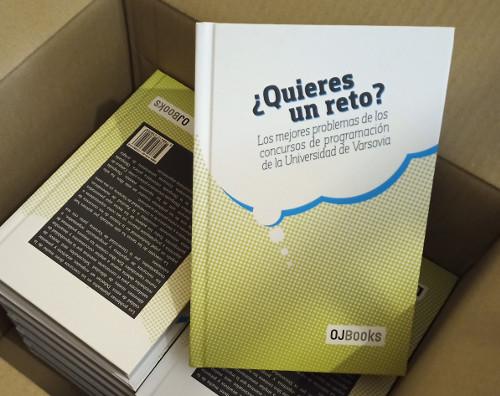Hello everyone!
I am happy to announce that "Looking for a Challenge?" book is now available in Spanish as "¿Quieres un reto?". This was possible thanks to great effort of Miguel Revilla Rodríguez who has translated, typeset and edited this publication. Thanks, Miguel! It was a pleasure working with you on this project.

You can check different buying options on BookFinder:
You can also find more competitive programming books in Spanish on OJBooks website.
¡Feliz lectura!












